The yeast that we use so often in the preparation of dough for pizza or bread is a biological product of concentrated mass of yeasts of saccharomyces cerevisiae. Yeast is known since antiquity as its history can be traced back to ancient Egypt, more than 5000 years ago.
Used primarily for its capacity to swell. Over time it became clear that yeast is a combination of microscopic single-celled organisms that do not contain chlorophyll. They are known in microbiology as saccharomyces. Assigned to the class of fungi.
The principle of action of yeast in baking is turning the product of sugars into carbon dioxide and ethanol. Not surprisingly, in most recipes for breads, muffins and cakes are advised to dissolve yeast in warm water with a small addition of sugar. This is because sugar, potatoes and eggs contribute to a rapid growth of yeast or in other words, accelerated souring, or effervescence of yeast. Additives such as salt and fat slow down this process and stop the activation of yeast.
Yeast types
In type, yeast can be hop, chickpea, legume, as it is intended – for Bread – Bakery; or beer – for beer and for pharmaceutical purposes. Today, in the store we can find fresh yeast in cubes and dry, instant, which is available in sachets. Dry yeast (powder) was invented during World War II.

Bread with yeast
For the production of different types of yeast (bread, beer, wine) is typically used a huge group of single-celled microorganisms saccharomyces (yeast) from the kingdom of fungi. These microorganisms have the ability to ferment, i.e. to convert carbohydrates into alcohol and fermentation is used in the production of alcohol, pasta and other products.
Throughout the biotech selection, certain groups of microorganisms that carry more value and less or no toxic elements and damages were manipulated, which led to the discovery of the yeast Saccharomyces. Yet today fierce opponents of yeast reminder that thermophilic yeasts are able to inflict extreme harm to our body and for their "corrosive" ability, there is strong evidence and data. As an alternative to the yeast stand is leavened bread prepared with simple, natural yeast from antiquity.
Composition of yeast
Baker's yeast is very rich in vitamins of group B - B1, B6, B2, B12, and many micronutrients. In yeast are found large quantities of phosphate salts, potassium salts, magnesium, sodium, calcium, etc. Because of its wealth of biologically active substances, it is a widely acknowledged supportive body tool.
With its mineral composition and vitamins, yeast regulates the metabolism in the body, increases its resistance to diseases, keeps it slow to tread wear. Thus increasing your chances to remain healthy and efficient for longer.
There is also a completely opposite theory, which states that the yeast destroys sensitive and less protected cells of the body by removing toxic substances with small molecular mass, which, after a number of diseases such as plague, etc. In beer yeast, phytochemicals in its composition are: Vitamins: B1, B2, B3, B5, B6, B7 (biotin, vitamin H), B9, B12 and minerals: P, Na, Ca, Mg, K, Zn, Mn, Fe.
Thermophilic yeast (saccharomyces) in yeast have been artificially created. For some, due to the technology of their creation, they can be called directly monstrous and unnatural. These yeasts are bred and grown in liquid medium - molasses diluted with water, treated with bleach, acidified with sulfuric acid, etc.

Yeast- saccharomyces (thermophilic yeast) that are used in distillery industry, beer production, and bread-making can not occur in natural conditions. saccharomyces are much more stable than the cells of the tissues. They are not destroyed or in the cooking process, or in saliva and gastric juices in the body.
Selecting and storing yeast
Whether you choose fresh or dry yeast for culinary use, it can hardly make a difference to the end result. Significantly remains, however, how to store bought yeast. Live yeast is perishable and should always be kept in the cold for a short period of time. It is better always to follow the expiration date on the package. In contrast, the dry yeast can be stored for a long time as long as the package is tightly closed and kept in a cool, dry place. You will know spoiled yeast by the very unpleasant smell that exudes.
Yeast is used in the production of pasta and brewing, but also in healthy eating. This applies in particular to brewer's yeast, which is processed by technology, killing microorganisms without affecting the vitamins and minerals they contain, and cooking yeast contains live yeast.
Culinary use of yeast
Yeast is a valuable product in the culinary arts, because without it, fragrant and soft white bread or freshly baked bread would not be a fact. This is not an absolute statement because people for millennia have baked bread with natural yeast, and the end result is unique. Today, however, making a living yeast takes most of us a long time and often yeast is preferred for the preparation of pizza dough, bread, cakes, muffins or cakes.
When preparing bakeries with yeast, always dissolve the yeast in a little warm water with a pinch of sugar, which speeds up the process of rising. Cover the container and leave the yeast for 20-30 minutes in a warm place. Then mix it with flour and other ingredients in the particular recipe. We have a proven recipe with yeast:
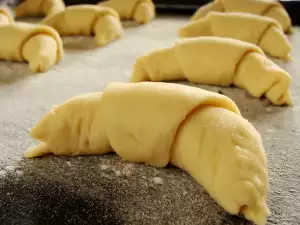
Buns with yeast
flour - 2 cups
yeast - 1 1/3 tbsp (20 g)
fresh milk - 1 cup (250 ml)
yogurt - 2/5 cup (100 g)
butter - 2/5 cup (100 g)
oil - 1 2/3 tbsp (25 ml)
sugar - 1 tsp
salt - 1 tsp
eggs - 1
sesame - for sprinkling or poppy seed
Preparation: Mix the yeast and sugar in warm milk and leave in a warm place until it is activated. Sift the flour into a bowl and add salt, effervescent yeast, yogurt and oil. Knead a soft dough, and finally add the melted and cooled butter. Leave the dough to rise in a warm buttered bowl for 1 hour. Transfer the risen dough on a floured surface and divide into 15 balls. Each ball is rolled into a sheet, cut out triangles, put a custom filling in and turn muffins. Arrange them in a greased pan and cover for 15 minutes. Then smear them with beaten egg, sprinkle with poppy or sesame seeds and put to bake in 390°F (200 °C) heat the oven. Bake yeast muffins for about 20 minutes.
Benefits of yeast
Yeast has a natural organic origin and provides the body with additional quantities of vitamins to food, and moderate to high doses of macroelements and trace elements in the body, in addition to the food.
It has been suggested, but not a proven fact that the yeast lowers the levels of cholesterol, increases the levels of the energy contained by the composition of the brewer's yeast vitamins and minerals. Brewer's yeast is loved by numerous fighters because it can improve their sports performance. It is estimated that the beer yeast reduces blood glucose levels and improves immunity.
Dangers of yeast
Once our ancestors brewed bread yeast with so - called rural cultures of rye flour, oats, barley and wheat. These types of natural organism cultures are enriched with organic acids, vitamins, minerals, enzymes, pectic substances and performance enhancers. People who are supporters of natural yeasts are totally against the preparation of bread with yeast.
According to a number of specialists yeast affects the plasma membrane function in the cells of the body, increasing their permeability to pathogenic microorganisms and viruses. In the esophagus, they pass into the blood and still reproduce poison normal microflora, through which the stomach can make B vitamins and essential amino acids in the diet. Under the influence of yeast bread, the activities of all organs of digestion: stomach, pancreas, gallbladder, liver and intestines is interfered with.
If a person abusing the consumption of gourmet products containing baker's yeast and acidifying foods, then your stomach can not long stand this abuse. The burning of the stomach walls can lead to the formation of gastritis (grow into ulcers).
In the stomach has increased decay processes, in consequence it develops pathogenic microflora traumatic ciliary strips. In slowing the discharge of toxic masses of the body are formed gas pockets where solids are created (stones).

Suffering from yeast
The consumption of products containing thermophilic yeast enables the formation of solid compounds, which at a later stage are converted into kidney, gall bladder stones, liver, and pancreas (pancreas). There is evidence that the yeast connects with a serious illness - acidosis (a disorder of acid-base balance).
As a result of the consumption of many products with yeast, appears increased fatigue, irritability, rapid physical and mental fatigue, nausea, burning in the throat, grey coating on the tongue, gastritis, dark circles under the eyes, muscle pain and loss of elasticity ( due to the increased acidity). Body combats acidosis, losing huge amounts of energy to restore balance at the expense of its own needs.
When such an attempt to restore the body happens, mass degradation of a number of vital elements - calcium, magnesium, iron, potassium, sodium begins. This causes the body to seize the necessary trace elements from bones, which can lead to osteoporosis. More negative impacts from yeast to human health may include swelling in the lower limbs, pelvis, head and led eventually to Varicose vein thrombosis, ulcers and lower immunity.
Beauty with yeast
Once the benefits and potential harms of yeast are clear, it is time to pay attention to appearances, because for centuries of yeast is used for beauty. As a cosmetic, yeast has the ability to rejuvenate and gives a pleasant appearance to our skin. Use beer yeats for external use on the hair, which will help to make it brilliant. Along with this you will notice that it reduces dandruff. Here are some ideas for face masks with yeast.
Mask with yeast and milk
1 2/3 tbsp (25 g) yeast is dissolved in 1 tablespoon raw yogurt to a smooth pulp. It is applied to the person and after 6 minutes and washed off with infusion of chamomile.
Mask of yeast against oily skin
For oily skin, dissolve yeast in lukewarm water to a paste. Wash your face with warm water, apply yeast. If you have dry skin, to the prepared mixture, add a little olive oil.

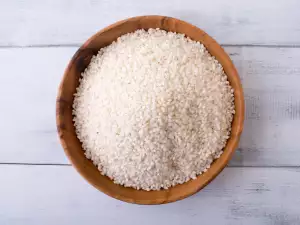


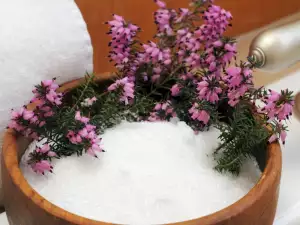



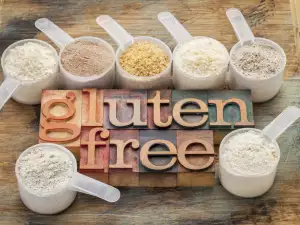


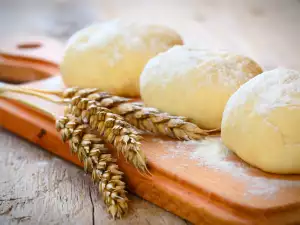
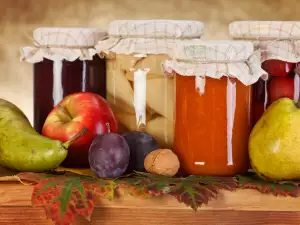
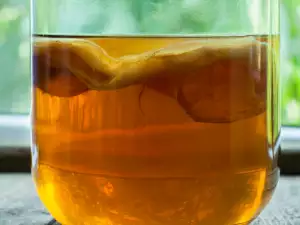
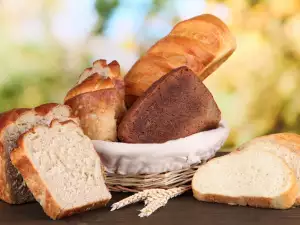




Comments